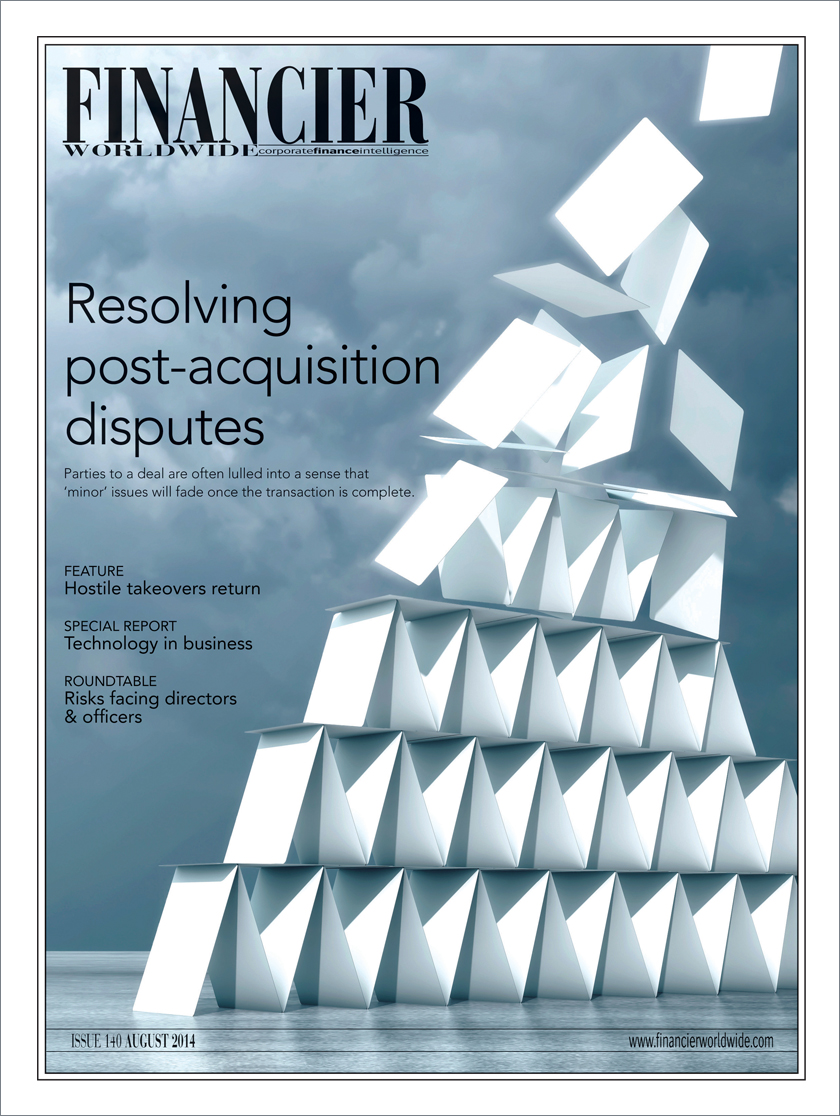Playing fair: counter striking a dirty tricks campaign
August 2014 | SPECIAL REPORT: TECHNOLOGY IN BUSINESS
Financier Worldwide Magazine
Rivals who try to undermine your credibility is part of the rough and tumble of business, but when untruths are spread from behind the shield of a fake identity, the line is crossed into the realm of dirty tricks.
In recent years, business leaders have witnessed an increase in malicious and targeted attacks on their reputations, so when anonymous comments start to appear propagating false rumours, how do you stay clean when the mud starts flying? Whether it’s turning stakeholder groups against a client, trying to gain leverage outside Court during litigation or seeking advantage in a commercial rivalry by piquing the interest of the regulator or alienating the customer, one frequent commonality is the use of social media to up the pressure on clients.
One trick that we have seen recently uses Wikipedia as a hub to create a negative story about a rival. In this instance, the opponent will start by researching all available online content in order to build a ‘mud pack’ on the target. Companies House, the electoral register and the social media profiles of partners and children are normally the first port of call, followed by a deep web search using sophisticated analytical tools. Chat rooms, for example, do not all feature in Google search results and can provide a treasure trove of juicy gossip and information that you might not even know exists and in which the opponent can strike up conversations, unanimously, with rivals, regulators, former employees and suppliers.
With their research complete, the opponent will create what appears to be authoritative third party content that is Wikipedia friendly. A common trick is to place (or in some instances pay for) a story in a small but established newspaper, often local or trade publications overseas with an online presence. Newspaper sites which are automatically collated into other news aggregators are a popular choice. Another way is to create an anonymous blog in advance and populate it with connected uncontentious content which suddenly publishes an article or thought leadership piece with criticism of the client. These sleeping ‘flogs’ can be activated at the right time to drop the intended bombshell and are often accompanied by an attention grabbing automated online press release. The favoured distributors are those that are picked up automatically by respected news aggregators like Forbes or Reuters. In a few relatively simple steps, the opponent has created three or four pieces of seemingly legitimate material with which to home in on his main target: the client’s Wikipedia page.
Wikipedia is all about sourcing information from ‘authoritative’ sources; if the content looks like it is legitimately sourced it has the potential to stick and propagate. As Wikipedia often tops search engine rankings, the allegations can quickly become part of the client’s Google-able legend and jump out at customers, regulators, potential investors and anyone else with access to the web and a passing interest in the client.
So how do you counter strike an attack like this? Preparation and a collaborative response from lawyers, PRs and digital forensics, acting speedily together is everything. A head start can often be gained by identifying the risks to your reputation in advance in order to mitigate the threat. Thinking like an opponent and conducting advance reverse due diligence to identify weaknesses (an open Facebook page, or rumours circulating on a chat room) is a good first step. Then, once an opponent decides to start creating their collateral, your combined team of advisers can swing into action with forensics personnel and lawyers working together to get behind the sleeping flog.
For example, using a photograph contained in the blog, digital experts may be able to uncover its meta data which can provide a goldmine of information to help identify who’s behind it. This in turn may provide the basis for further legal action but more often than not, the simple action of trying to unmask the perpetrator is enough to deter them. By making their identity the focus of the story, you can cause their carefully laid trap to blow up in their faces.
Communications advisers should also prepare answers for difficult questions, brief internal stakeholders and start collating the evidence you’ve gathered to show that this is all part of a dirty tricks campaign.
Approaches to any search engine, citing the recent ‘right to be forgotten’ may also be a possibility: at the time of writing we are still waiting to see how Google and its peers respond to the Court of Justice European Union (CJEU) ruling which requires them to stop indexing inaccurate or out of date personal information.
Wikipedia needs to be handled sensitively and its internal processes must be followed when it comes to amending or removing content. Yet being able to demonstrate that sources of information have not been authoritatively sourced or are part of a smear campaign is usually persuasive and Wikipedia are willing to ban amenders when they misbehave or even freeze pages which become a battleground for edit wars.
It has never been easier for a rumour – even one without a leg to stand on – to find its way around, and now more than ever it’s important that business leaders and businesses take the legal, digital and communications steps to prepare for, then spot and counter strike a dirty tricks campaign as soon as possible.
Rod Christie-Miller is CEO and partner at Schillings. He can be contacted on +44 (0)207 034 9000 or by email: rod.christie-miller@schillings.co.uk.
© Financier Worldwide
BY
Rod Christie-Miller
Schillings


